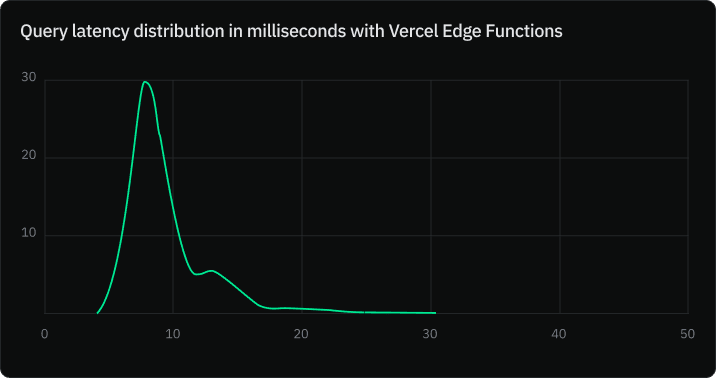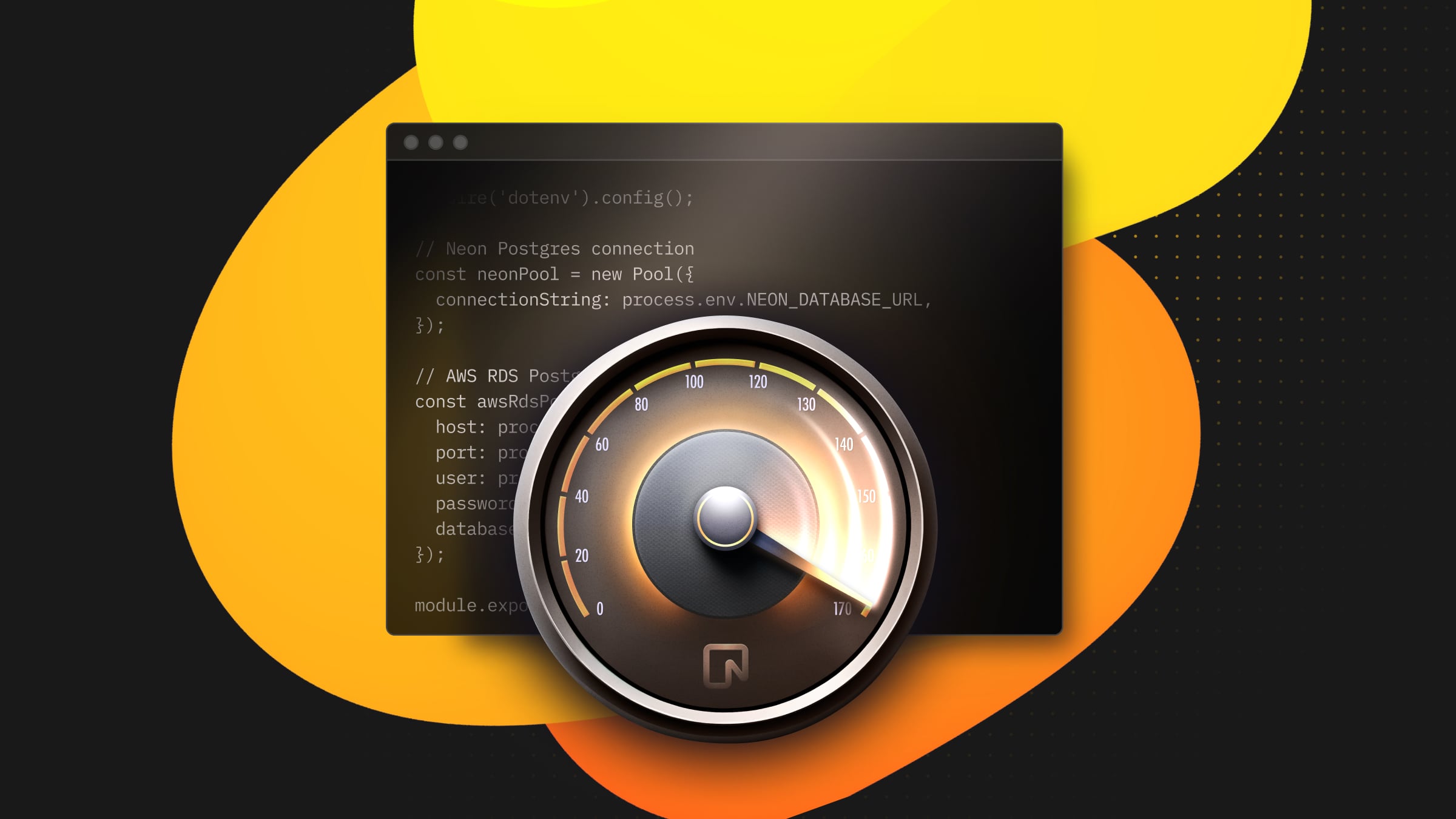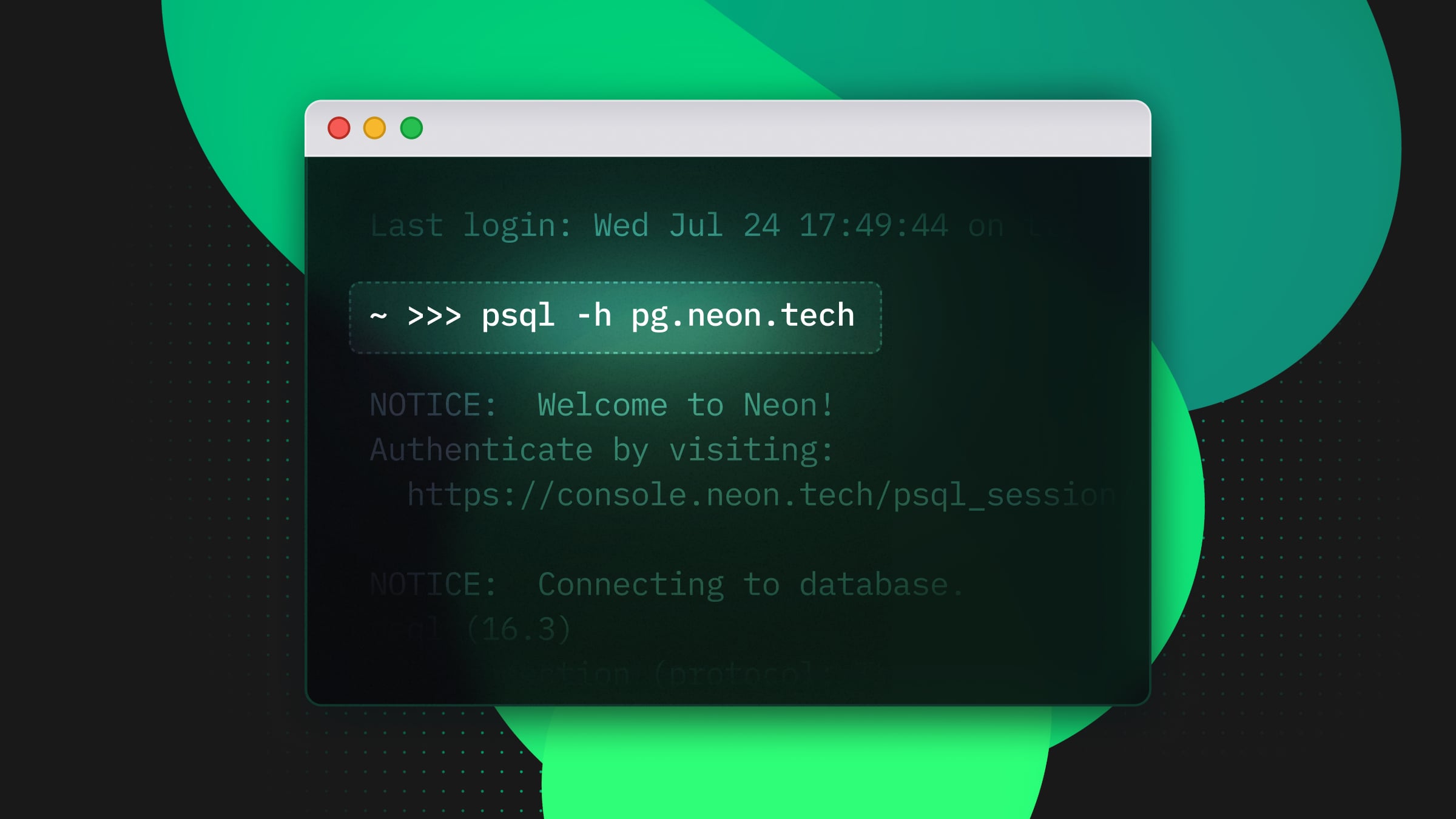Sub-10ms Postgres queries for Vercel Edge Functions
Faster queries for Vercel Edge Functions

Today, we are thrilled to announce the release of our enhanced driver for your Postgres queries at the Edge.
With this release, developers can observe a 40% reduction in query latencies from Vercel Serverless Functions and Edge Functions, bringing same-region queries down to single-digit milliseconds and leading to a faster user experience.

You can also check out Vercel’s benchmark for Edge Functions to test the latencies.
Getting started with the driver
Here is an example of how to use the driver with Vercel Edge functions:
import { neon } from '@neondatabase/serverless';
export const config = { runtime: 'edge' };
export default async (req: Request) => {
const id = 12;
const sql = neon(process.env.DATABASE_URL!);
const oneAtom = await sql("SELECT * FROM atoms WHERE id=$1"), [id]);
return new Response(JSON.stringify({ oneAtom }));
}Using Drizzle-ORM and Neon serverless driver
We worked closely with the team behind Drizzle-ORM, an ORM for TypeScript, to add support for this release. Here is an example of how you can use the driver with Drizzle-ORM for type safety:
import { drizzle } from 'drizzle-orm/neon-http;
import { eq } from "drizzle-orm";
import { neon } from '@neondatabase/serverless;
import { atoms } from './schema';
export const config = { runtime: 'edge' };
export default async (req: Request) => {
const id = 12;
const sql = neon(process.env.DATABASE_URL!);
const db = drizzle(sql);
const oneAtom = await db.select().from(atoms).where(eq(users.id, id));
return new Response(JSON.stringify({ oneAtom }));
}Why is the driver faster?
In short, the performance gains are with one-shot queries and primarily due to adding support for SQL-over-HTTP via fetch to the driver and adding support for cached connections to Neon’s proxy.
One-shot queries are the first queries executed from your Serverless or Edge Functions. Those traditionally require establishing a connection, where round-trips can increase latency.
Connection caching is experimental and opt-in only. You can try it by setting fetchConnectionCache to true in the neonConfig object.
import { neon, neonConfig } from '@neondatabase/serverless';
export const config = { runtime: 'edge' };
neonConfig.fetchConnectionCache = true; // Opt-in to experimental connection caching
export default async (req: Request) => {
const id = 12;
const sql = neon(process.env.DATABASE_URL!);
const oneAtom = await sql("SELECT * FROM atoms WHERE id=$1"), [id]);
return new Response(JSON.stringify({ oneAtoms }));
}Additionally, the driver is backward-compatible and works seamlessly with your existing Neon and Vercel Postgres code.
Pool or neon? Which one should I use?
If you are executing a single query from your Serverless or Edge Function, we recommend switching to the new syntax and use neon to observe better latency. However, if you execute multiple queries, then create a new connection with Pool.
// One query per function
import { neon, neonConfig } from '@neondatabase/serverless';
const sql = neon(process.env.DATABASE_URL!);
const allAtoms = await sql("SELECT * FROM atoms"));
// multiple queries per function
import { Pool } from '@neondatabase/serverless';
const pool = Pool({connectionString: process.env.DATABASE_URL});
const neonAtom = await pool.query("SELECT * FROM atoms WHERE id=$1"), [10]);
const hydrogenAtom = await pool.query("SELECT * FROM atoms WHERE id=$1"), [1]);As the edge computing landscape evolves, we are committed to improving latencies and how users interact with your applications. We invite you to try Neon and explore the benefits the new driver brings to your applications and welcome your feedback on our community forum as we continue to improve Neon to serve your needs better.


